What a game designer should always remember, Mark Brown, an indie developer and editor of the Pocket Gamer resource, told the Game Maker’s Toolkit video cycle. With the author’s permission, we have prepared a text version of the material in Russian. We share.
Games often do what they want over time. For example, in The Legend of Zelda: Majora’s Mask, the same three days were repeated over and over again, in The Talos Principle, the player worked hand in hand with himself from the past, and in the unusual Superhot shooter it was necessary to freeze to stop time.
But here I came across a funny toy called Nova-111. And over time, things happen in it that, in my opinion, have never happened anywhere else. In addition, the game has three important lessons for a game designer.

Nova-111 is a turn–based game where the player and his enemies move steadily from square to square. But certain elements at the same time act in real time. For example, there is a jelly-like bubble. If you stumble upon it, the timer starts. If you don’t have time to deactivate the sticky sphere before the time runs out, it will split into two parts.
It’s an interesting find, and here’s why. There is a segment in the game where beak-headed enemies are waiting for the player. They move synchronously with the character.
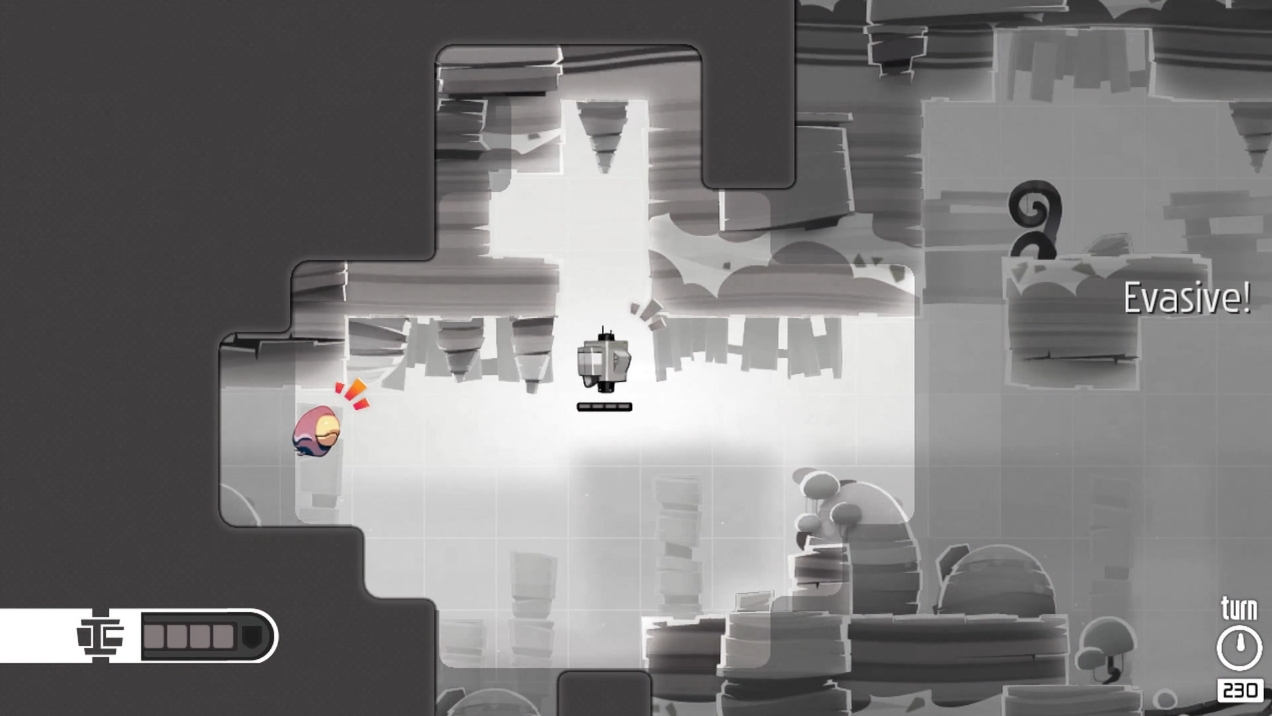
There are also stalactites that constantly fall from the ceiling in real time.
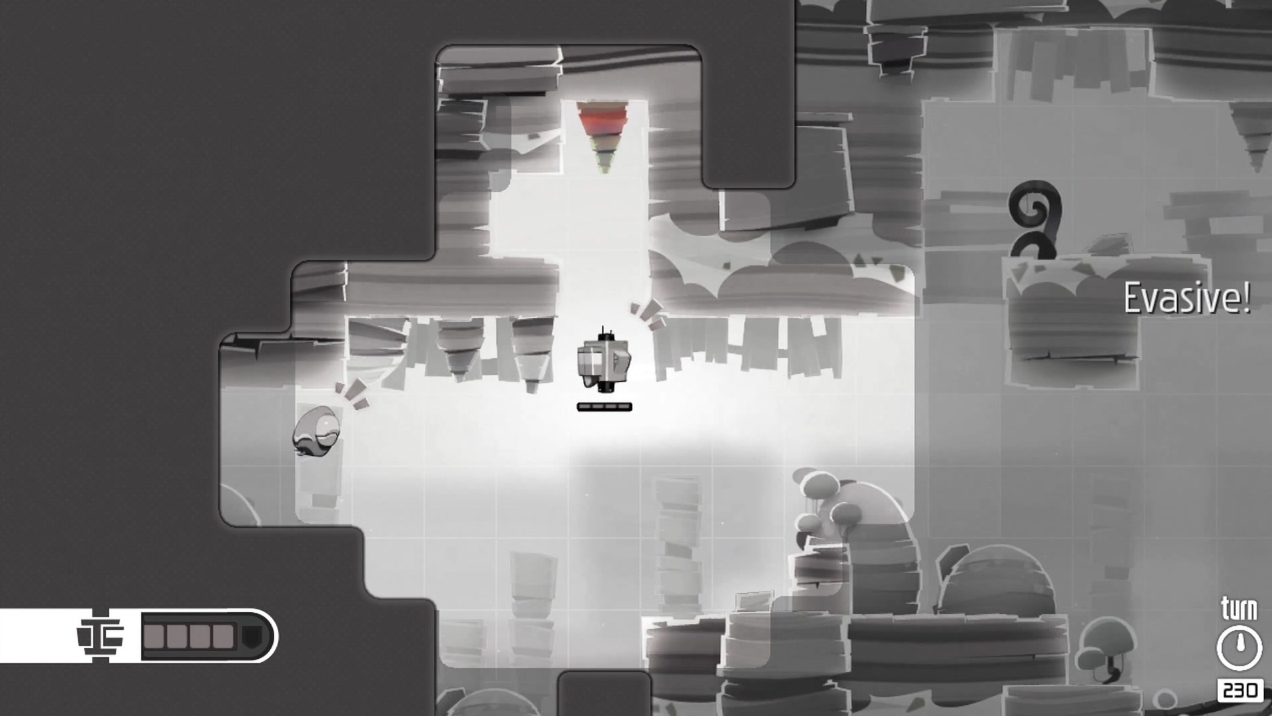
We combine these two elements, and it turns out that at some point the player can drop a stalactite on the enemy’s head. An enemy who can’t do anything about it.

It turns out not just a combination of two systems, but a mixture of genres.
And here is the first lesson: even genres that are very far from each other can be combined. Even such completely opposite ones as turn-based strategy and real-time game.
But, of course, this will only work if the genres complement each other in some interesting way.
So, in Nova-111, elements of one genre are used to attack enemies who act according to the principles of another genre. You can put the enemy under a bullet or put a bomb in the affected area – it will explode after the player has gone to a safe distance.
But you have to pay for everything. Enemies that move in real time often force you to act rashly. In step-by-step strategies, you always need to thoughtfully plan your next actions two or three steps ahead. Real-time games are entirely based on quick reaction.
These two genres involve completely different areas of the brain. And that’s why I love turn–based strategies, but I can’t stand real-time strategies that are more complicated than Plants vs Zombies.
So when in Nova-111 the enemy restricts your movements and takes away health units every two seconds, or when you wander into a fire or step on a mine that later detonates in real time, you have to put all your plans out of your head and act on your instincts. This often leads into the thick of a group of opponents, and as a result, you have to fight them from a disadvantageous position. And, for example, the distributor, from which enemies jump out in real time, forces you to continue moving without stopping – although you might want to stop and catch your breath.
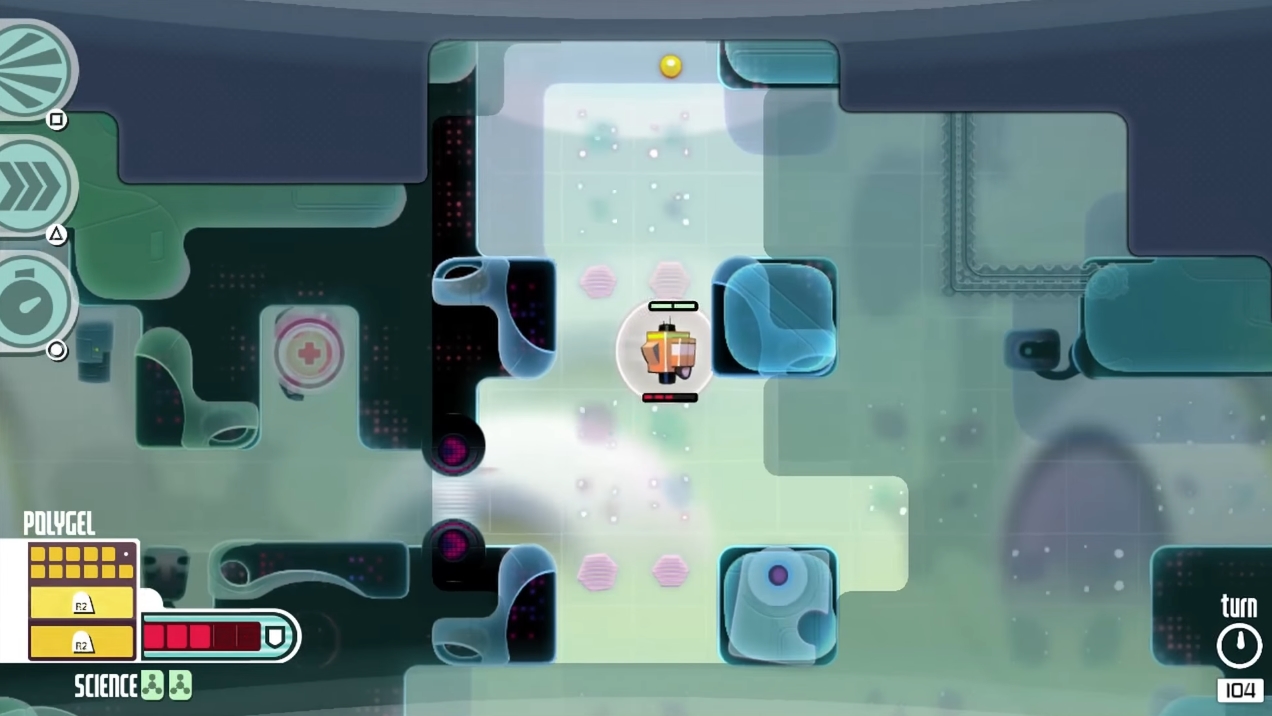
As a result, the Nova-111 switches between high-speed modes: from a more measured, in the spirit of 868-Hack, to a more nervous one, as in Crypt of the Necrodancer.
At the same time, the player himself can also manage time. It can be stopped for a couple of seconds and move freely between moves. This is very convenient, because you can push frozen enemies in different directions. For some puzzles, this is an extremely important technique: it helps to get past the sentinel robots.
The most interesting thing about Nova-111 is that this game, like the bust of Lara Croft, was born out of a programmer error. And the game designers decided to keep it.
Eddie Lee from Funktronic studio told me that the game was conceived as a regular step-by-step “bagel”. But then an error crept into the code, and the enemies began to move in between moves.
Instead of fixing the bug, the team developed the idea and built the whole game around it.
So here’s the second lesson: be open to the surprises that development presents. As Lee says, “you will make exciting discoveries that will completely change the direction of the game. It is a very frightening process, because it cannot be controlled in any way, but at the same time it is beautiful in its own way.”
On this path, not everything will be like clockwork.
For example, the Funktronic team tried to add enemies that would act completely in real time, but nothing came of it, because the balance broke as a result. And the character also had a fuel gauge, which also decreased in real time, but it had to be removed because because of it the player could not calmly think about the next move.
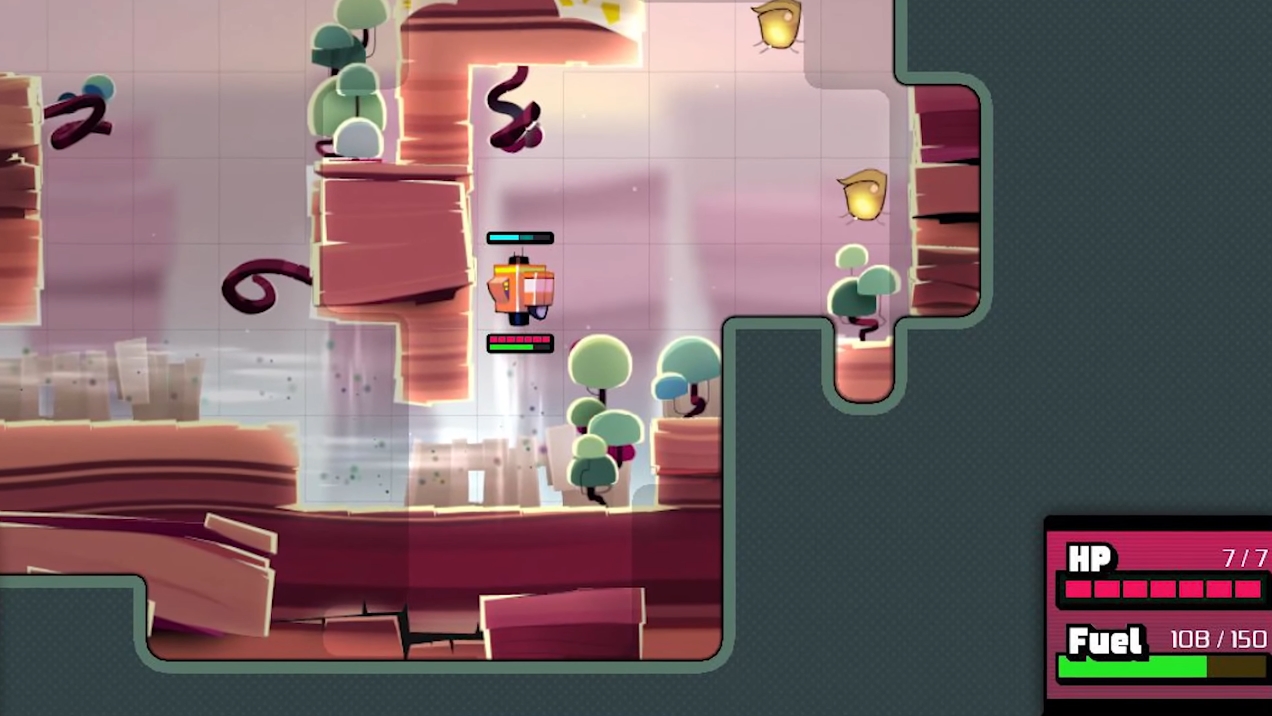
Not every game design solution in the game is successful. For example, one of the varieties of enemies, teleporting, leaves behind tiny bombs. But the player will never stumble upon them. These bombs look like an atavism from the times when the player had a fuel gauge and had to move too fast.
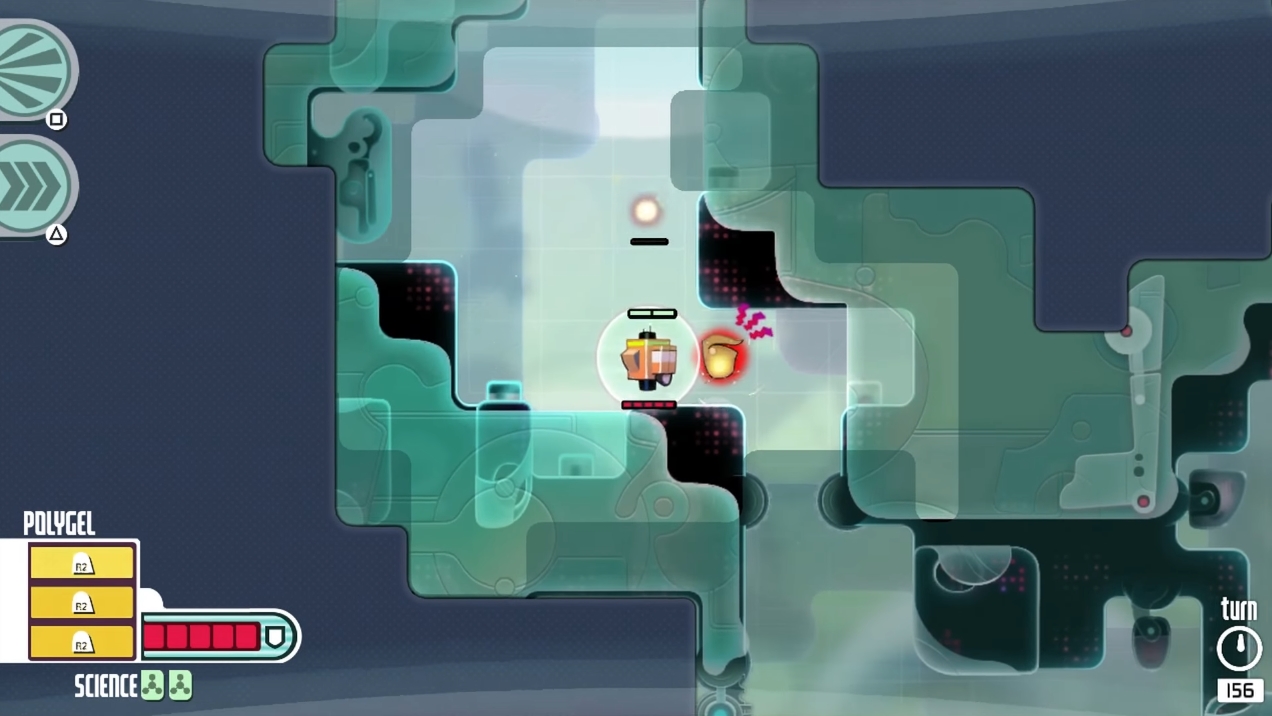
Plus, those cool attacks when you defeat a “step-by-step” enemy with the help of a “real” one are too rare, and you are rarely forced to resort to them. And as we have already discussed in the Swindle article, it is necessary to get the player to do risky and interesting things, not simple and boring ones, with a carrot or a carrot.
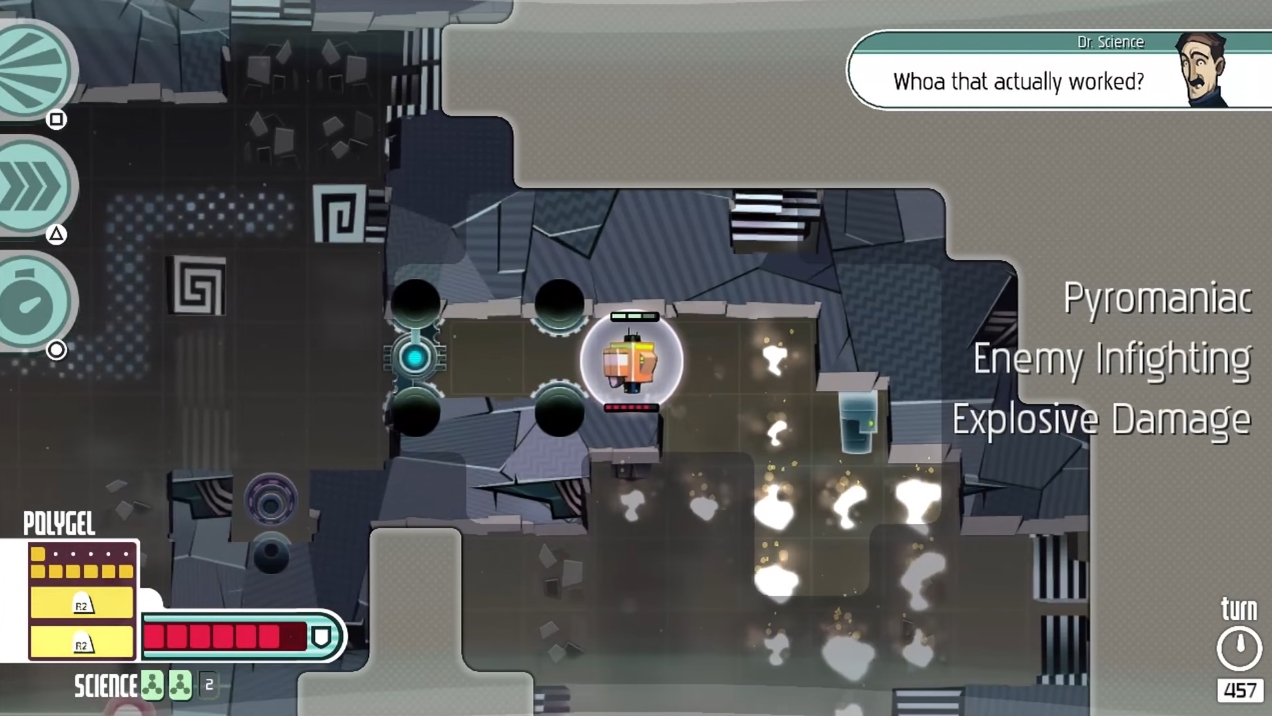
So it’s fun to kill enemies with the help of the environment, but the game is so simple that there is no benefit from this technique. There are no opponents that can be defeated only by a real-time attack. That is, no one forces the player to interact with the game at a more complex level.
There are also too many segments in the game where real-time elements are not involved at all. Yes, puzzles where you have to switch the polarities of magnets, or robots that block lasers – it’s all great. But they have nothing in common with the main idea of Nova-111.
But without the right implementation, a good idea is just a good idea. And that’s why the game looks nice in press releases and within the pitch. But in reality, everything is not so rosy.
Nova-111 is undoubtedly a good game, but it failed to fully reveal the interesting idea that was at the heart.
Feature, the main mechanic – call it what you want. But if the game is based on an interesting idea – make it so that it can be traced throughout. Let it develop, change, let it make the players think in a new way.
This is the third lesson.
Translated by Irina Smirnova
Source: Game Maker’s Toolkit
